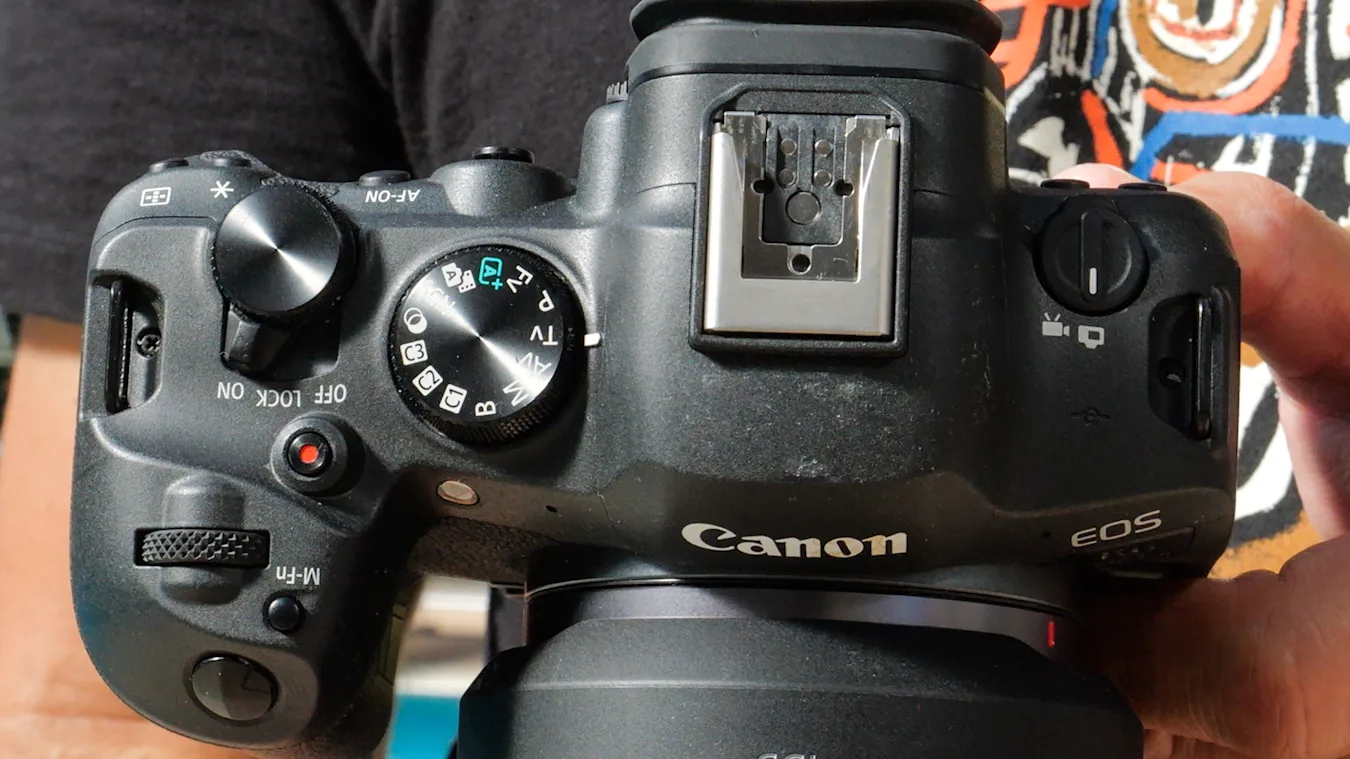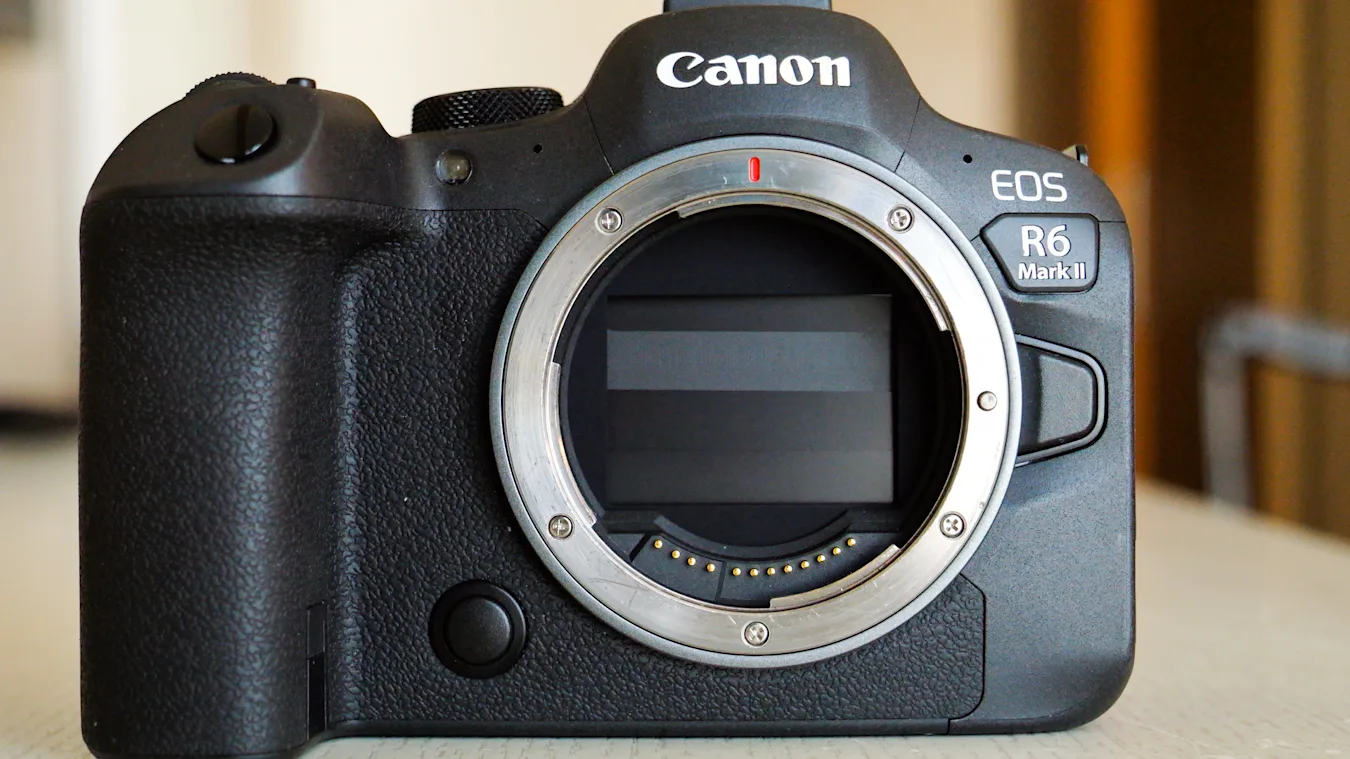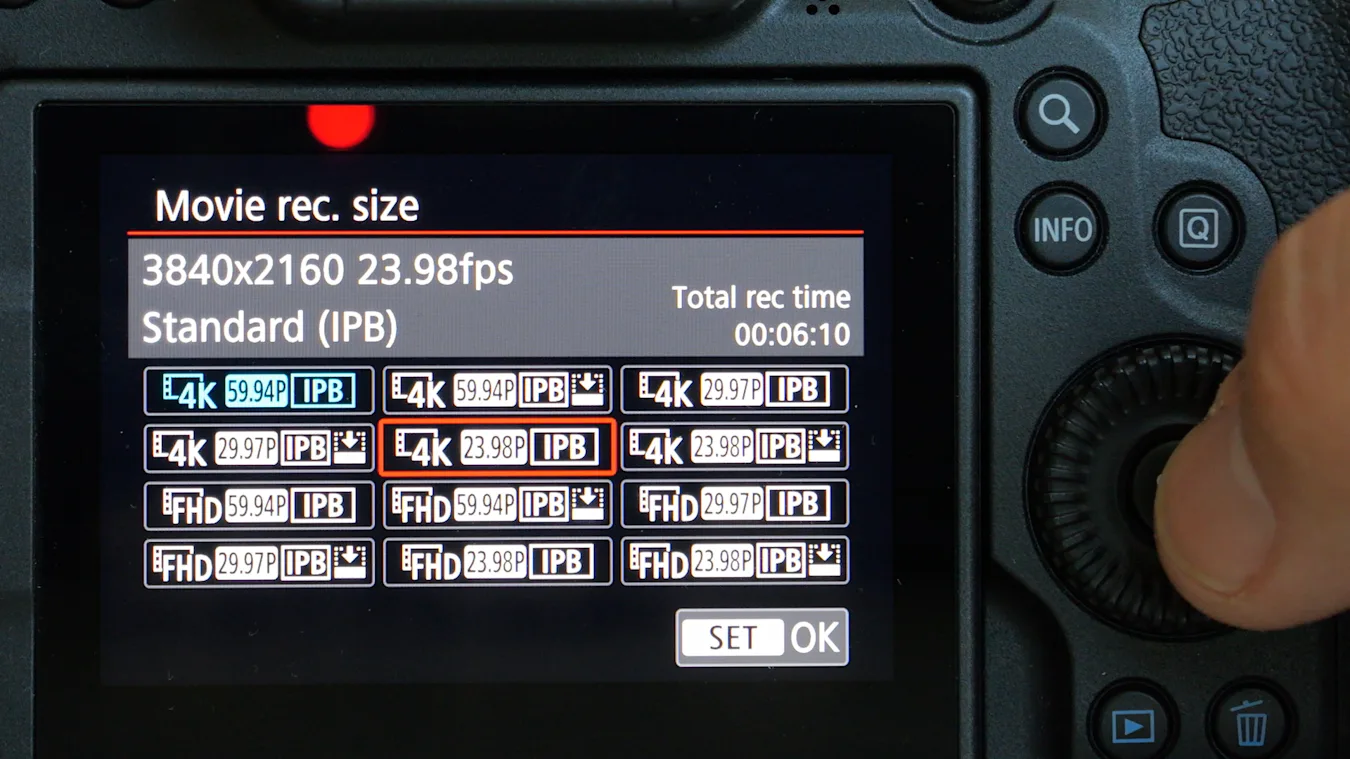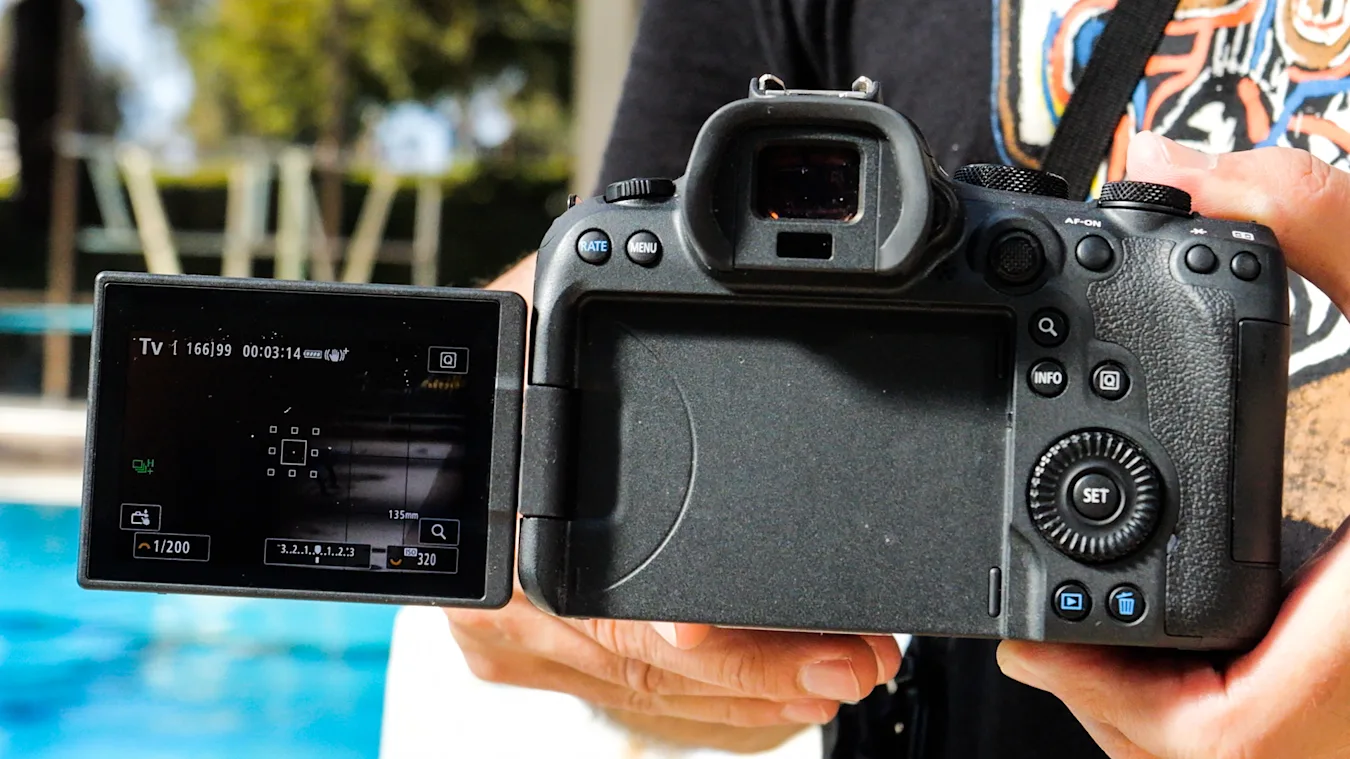Just two years after the launch of the original EOS R6, Canon has unveiled its successor, the $2,500 EOS R6 Mark II. It brings a number of key improvements, like a higher-resolution 24.2-megapixel sensor and faster shooting speeds. Most importantly, Canon has significantly reduced the previous model’s issues with overheating.
The EOS R6 was the best camera in this important price range when it launched, thanks to the speed, powerful video features and excellent Dual Pixel hybrid autofocus. However, once Sony’s $2,500 A7 IV came along with comparable abilities, more resolution and no overheating problems, the R6 lost that particular crown.
At a preview event in San Diego, Canon let me shoot with R6 Mark II prototypes for a couple of days in a variety of sports situations. As it’s not a production model and still had a few bugs, this isn’t a final review – but it gave us a chance to share some early impressions.
Body and handling
The EOS R6 II isn’t just a slightly updated ‘A’ version of the original. It has significant physical and performance changes, starting with the new 24.2-megapixel sensor. It’s not, as rumors suggested, the stacked backside-illuminated (BSI) sensor from the EOS R3; there’s a reason that model costs so much. But it does offer some benefits over the 20-megapixel chip on the R6.
Canon promises improved image quality beyond just the extra megapixels, thanks to the updated image processing. It also offers improved low-light sensitivity despite the slightly smaller pixels. And Canon says that rolling shutter is reduced over the R6.
The R6 features some changes on the outside as well. The power/lock/off switch is now positioned at the right where it’s easier to access yet harder to hit by accident. It also has a new video/photo mode switch that keeps those functions, and all their settings, separate. Flipping it also changes the menus, and Canon has introduced a convenient video-specific Q menu.

Steve Dent/Engadget
Otherwise, it’s roughly the same weight and size as the R6, and has an identical grip, menus, control layout and handling. It also uses its predecessor’s, nice flip-out display for vlogging or selfies, dual UHS II card slots and 3.67-million-dot electronic viewfinder. And, of course, it comes with microphone and headphone ports, along with a USB-C socket and (unfortunately) a microHDMI jack. It has a new in-body stabilization (IBS) system, but it offers the same 8 stops of shake reduction as the EOS R6.
The battery is identical, too, but Canon has boosted efficiency, from 510 shots max on the R6 to 760 on the R6 Mark II. In one day, I shot over 2,000 photos without changing the battery, mostly using the mechanical shutter – quite impressive.
Performance and image quality
Mechanical shutter bursts speeds are unchanged at 12fps (RAW, full-frame), which is good considering the extra resolution. However, you can now fire RAW shots in silent mode at an exuberant 40 fps. What’s more, the R6 II now comes with a pre-shooting option (RAW burst) that captures RAW files for a half second before you push the shutter. That lets you catch a moment even if you react slowly, albeit at the expense of some battery life. When trying the feature, I found that it perhaps let me capture a few shots (out of thousands) that I might’ve missed otherwise.

Steve Dent/Engadget
Those speeds are superb, but if photos are marred by excessive rolling shutter (hello Sony), they aren’t that useful. Luckily, rolling shutter is present but better controlled than on the R6, and much less severe than I saw on the A7 IV. It can take a fairly large number of shots (about 70-75 uncompressed RAW files, or 140 compressed RAWs) before the buffer fills, and it resets fairly quickly with fast UHS-II V90 cards. Still, it would have been nice to see a CFexpress slot for faster shooting and better quality video files.
The autofocus on the R6 II is more advanced than any Canon model to date, including the R3, the company says. It now handles people, animals and vehicles, including motorcycles, cars, trains and horses. And it now has an auto-select option that lets the AI decide what to track, which should be a requirement on every mirrorless camera.
The AI smoothly tracked my subject’s eyes, but it occasionally got lost and wasn’t quite up to Sony’s high standards. In regular spot continuous mode (no AI), the autofocus seemed as accurate as the R6, nailing shots in most circumstances. It was occasionally confused by the background or close subjects, but again, this was a prototype unit; these issues could be improved by the December release date.
Gallery: Canon EOS R6 Mark II camera sample images | 27 Photos
Gallery: Canon EOS R6 Mark II camera sample images | 27 Photos
Image quality is also hard to judge at this point, as RAW files aren’t yet ready to be seen. But JPEG files looked great, with usual Canon-like warm skin tones and accurate hues. Low-light capability was surprisingly solid, with noise well-controlled at ISO 6400 and even beyond.
Video
My biggest issue with the original EOS R6 was video, and specifically the overheating issues. That model could only shoot 4K 60p for 30 minutes, and only for another 10 minutes or so after it cooled enough to shoot again. Suffice to say, that’s a serious problem for professional shooters.
Those issues are effectively gone, and Canon also removed the 30-minute time limit for recording. You can now shoot 4K 60p uncropped for 40 minutes and it can normally go well beyond that. Cropped 4K 60p has a 50 minute limit, and supersampled 4K 30p has no limitations.

Steve Dent/Engadget
It also has better video specs overall. Internally, you can shoot 4K 60 fps supersampled from a 5.1K portion of the sensor (or the full sensor width with some pixel binning). 4K at 30 fps is supersampled from 6K using the full sensor width. And it now supports 180 fps for 1080p, up from 120 fps before. Capture files are still limited to MP4 and Quicktime with no ProRes internally – likely a limitation of the UHS II cards. Like photos, there’s a no pre-shooting option that captures 3 or 5 seconds of video in a loop before you push the record button.
Additionally, the camera supports 10-bit 4K video and increased dynamic range with either HDR PQ or CLog3. And you can even shoot 6K RAW to an external Atomos recorder, though that feature wasn’t ready yet for testing.
Gallery: Canon EOS R6 Mark II press images | 15 Photos
Gallery: Canon EOS R6 Mark II press images | 15 Photos
As with photos, AF for video tracks humans, animals and vehicles. In my limited testing, it performed well, only occasionally focusing on the background. So far, subject tracking isn’t quite as reliable as I saw on the A7 IV, but again, it may improve with some firmware or other tweaks.
Video was sharp and I didn’t run into any overheating issues in San Diego, where temperatures hit about 80 degrees in the sun. 1080p 180p video seems a bit soft, as it’s captured with some pixel binning, and cropped 4K also lacked sharpness compared to full-frame 4K. I was happy with the colors, and low-light video capability was good to excellent.
Wrap-up

Steve Dent/Engadget
By minimizing heat issues, the R6 II is already a big improvement over the original R6. But it also looks like a better camera for photography thanks to the higher resolution, faster speeds and improved image quality – with no stacked sensor required.
Canon’s entire RF ecosystem keeps getting better, too. Its latest lens is the impressive 135mm f/1.8, joining 26 other full-frame prime and zoom lenses. So, this system has become surprisingly mature, considering it only launched four years ago. I can’t give you a final evaluation for key features like image quality and autofocus, as it’s still in the prototype stage. However, we expect to revisit the Canon EOS R6 Mark II in the form of a full review once it launches in December.
All products recommended by Engadget are selected by our editorial team, independent of our parent company. Some of our stories include affiliate links. If you buy something through one of these links, we may earn an affiliate commission. All prices are correct at the time of publishing.


